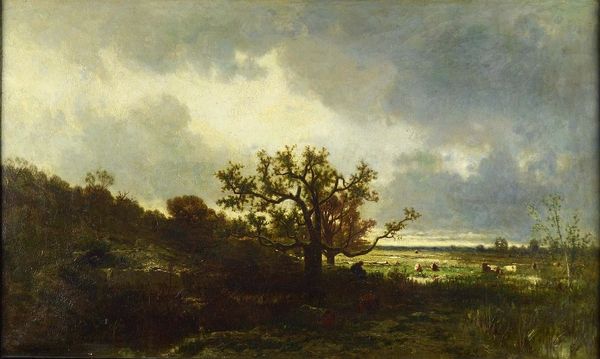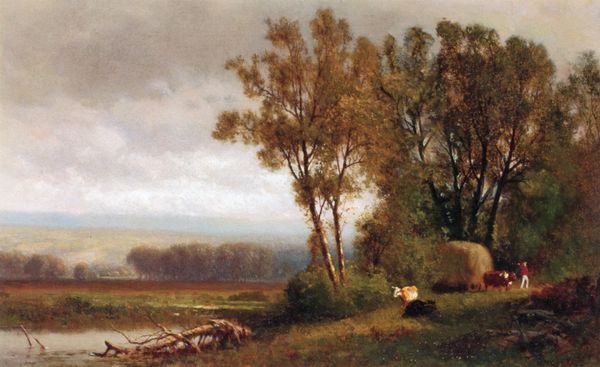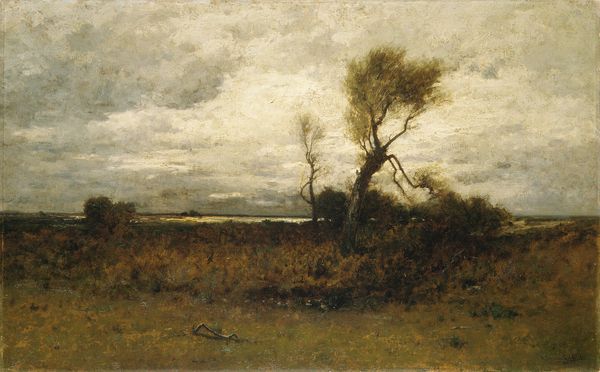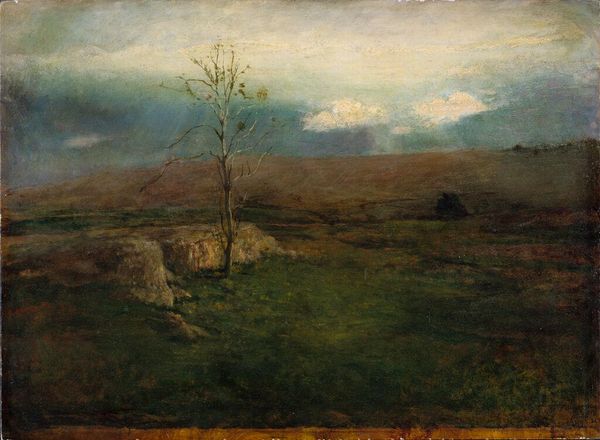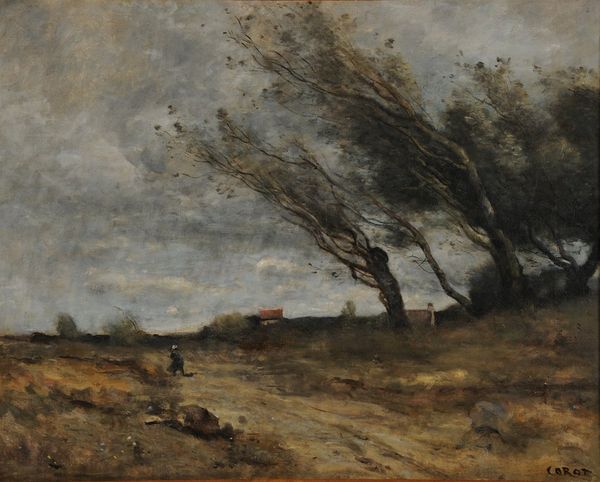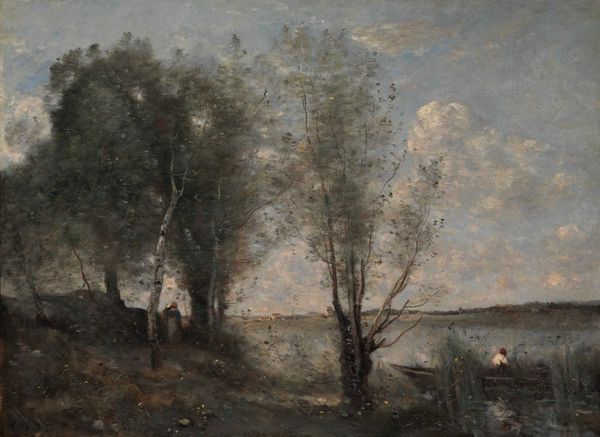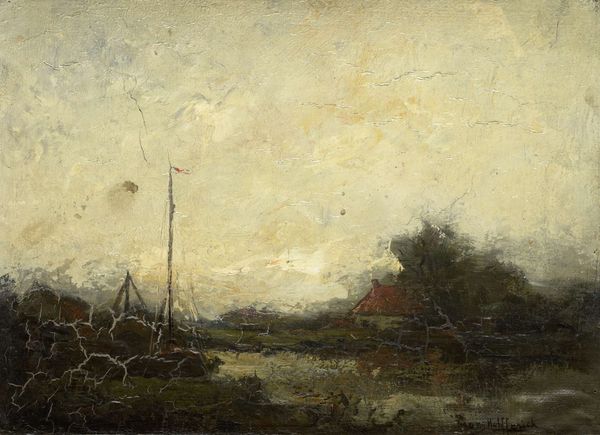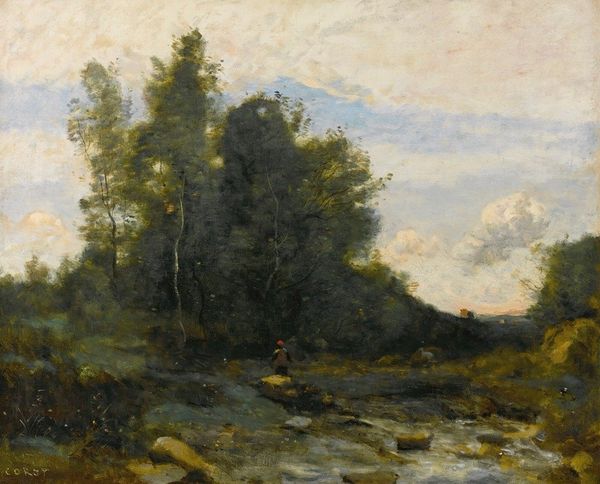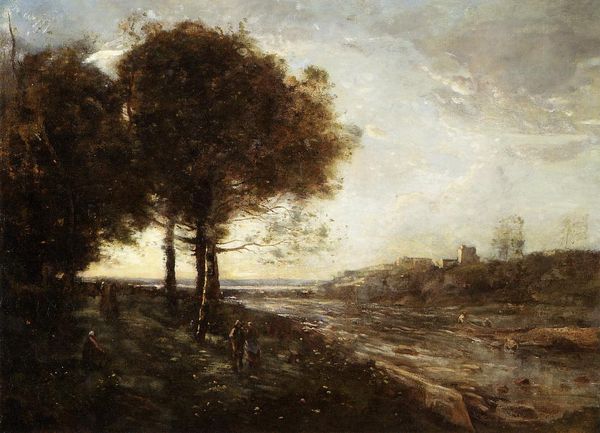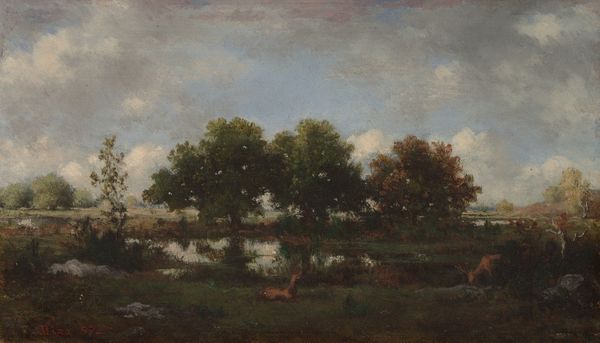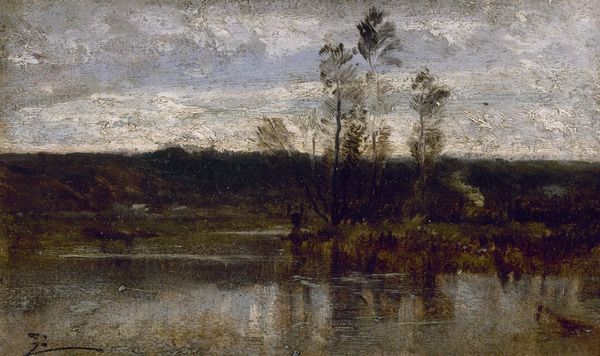
painting, oil-paint
#
painting
#
oil-paint
#
landscape
#
oil painting
#
romanticism
#
realism
Copyright: Public Domain: Artvee
Camille Corot captured this tranquil scene of La Beauce, France, with oil on canvas. The peasant woman stands as a poignant symbol amid the vast landscape. Throughout art history, the image of the solitary figure has appeared repeatedly, embodying themes of isolation, resilience, and the human connection to nature. In earlier Renaissance paintings, similar figures were frequently depicted in religious contexts, embodying the divine presence. In the Romantic era, they were rendered in nature, contemplating the sublime. Here, she’s a timeless emblem of humanity. Think back to Caspar David Friedrich’s wanderers, dwarfed by the immensity of nature, or even further back to medieval depictions of hermits in the wilderness, reflecting on spiritual truths. This motif has evolved, passed down through generations of artists, each imbuing it with new layers of meaning. The motif of the solitary figure taps into our collective memory, stirring feelings of introspection and empathy. The woman in "The Plain of La Beauce" is not merely a figure in a landscape, but a vessel of our shared human experience. The scene is like a recurring dream in the collective consciousness, forever echoing through art history.
Comments
No comments
Be the first to comment and join the conversation on the ultimate creative platform.
